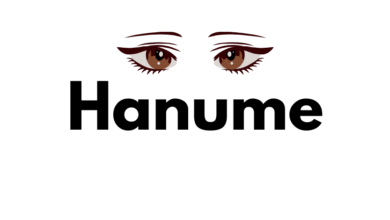Youhttps www youtube com

If you’ve ever visited youtube.com, you know just how big the platform is. It’s the place where people go to watch everything from cat videos and music clips to full-length documentaries and live streams of major events. I first discovered YouTube when I wanted to learn how to fix my motorbike in Pakistan, and since then I’ve used it for everything: cooking tutorials, tech reviews, even making a small side-channel of my own.
In this article I’m going to walk you through using youtube.com as both a viewer and a creator: how to set things up, get started, improve your reach, grow your audience, and even earn money, all while staying within the rules. I’ll share what I learned (including the mistakes) so you don’t have to repeat them. By the end, you’ll feel confident navigating YouTube and creating your own space on it.
What is YouTube (youtube.com) and how it works
At its core, Youtube.com is a video-sharing website owned by YouTube (part of Google LLC). Since launching in 2005, it has grown into one of the world’s largest media platforms. You can watch videos, upload your own, live-stream, create playlists, comment, like and subscribe to channels.
When I first logged in many years ago, I just browsed random videos. Later I realised the power of creating a channel instead of just being a consumer. YouTube is accessible via the website (youtube.com) and via mobile apps on Android and iOS. According to the official Help Center, both the website and mobile app support uploads, subscribing, and interacting with content.
Why should you care? Because whether you are a viewer or a creator, understanding how the platform works gives you a big advantage. For example: what content gets recommended, how you find videos, how search works inside YouTube—all these shape how you appear to other users.
Read Also: HTTP Error 431 (Request Header Fields Too Large) — Causes, Fixes & Best Practices
Setting Up Your YouTube Channel
Starting out as a creator is much simpler than many think. Here’s a step-by-step breakdown of what I did and what you should do.
1. Create an account and channel
If you already have a Google account, you can go to youtube.com, click on your profile, and select “Create channel”. Choose a channel name that reflects what your content will be about. For example, when I started I used “Faisalabad Tech Tips” because I wanted to record short tech how-tos for phones.
2. Branding your channel
Your channel should look inviting and professional enough. A banner image, a profile photo, and a clear “About” section help. Your banner might say something like “Simple Tech Tips for Beginners” so viewers know what to expect.
3. Choose your niche and content plan
Pick a theme or topic you’re comfortable with and which you believe people will watch. If your channel is all over the place, it becomes harder to build an audience. I found that focusing on “smartphone troubleshooting” helped me build consistency. Think about how often you’ll upload and what you’ll film.
4. Define your upload schedule
Consistency matters. If you say you’ll upload one video every week, try to stick to it. YouTube rewards predictability in its algorithm (more on that later). Even if your videos are simple, regular uploads build trust with your viewers.
Uploading Your First Video
Once your channel is ready, it’s time to upload content. Here’s how to do it and what to focus on, based on what I experienced.
Step-by-step upload
-
Go to youtube.com and click the “Create” (camera) icon > “Upload video”.
-
Select your video file from your computer or mobile device.
-
Add a title, description, tags, and select a thumbnail.
Title and thumbnail matter a lot
Your title should clearly reflect what the video is about and include some keywords people might search for. For example: “How to Fix WhatsApp Notifications on Android – 2025 Guide”. The thumbnail should be visually clear: I use a bold readable text + face/image + color contrast.
Description and tags
The description is where you explain what the video covers and include a few keywords naturally. I also add links to related videos or playlists. Tags help YouTube understand the context, so include variations like “WhatsApp notification fix 2025”, “Android notifications issue”.
Playlists, end screens and cards
Creating a playlist helps keep people watching more of your videos. End screens (the bit at the end of your video) can link to other videos or your subscribe button. Cards are those small pop-ups during the video—use them sparingly to link to other content. When I used them, I saw more people clicking through to my other videos.
Optimising Videos for Search and Discovery
Getting your video uploaded is one thing—getting it seen is another. Optimization is the key. Here’s what I found effective.
YouTube’s algorithm basics
YouTube uses multiple signals to decide which videos to recommend: how many people click your video, how long they watch it (watch time), how many like or comment, how many subscribe after watching. If people stop watching early, the algorithm perceives the content as less valuable.
Keywords in title, description, tags
Use keywords that people are typing into YouTube search. If your topic is “android whatsapp fix 2025”, then ensure your title contains that phrase or a close variation. Your description should repeat it naturally, maybe once in the first 1-2 sentences.
Audience retention and watch time
When I checked my analytics, I realised that viewers often dropped off after 30 seconds. So I changed my intro to hook people faster (“Here’s how to fix your WhatsApp notifications in two minutes”). That improved the average watch time and subsequently the views increased.
Engagement signals
Encourage viewers to like, comment and subscribe. You might say “If this helps you, hit like and subscribe for more tech tips” (but make it natural, not forced). I responded to comments and found that helped build a small community which increased retention.
Thumbnails and click-through rate (CTR)
A clear, attractive thumbnail increases the chance of someone clicking your video. YouTube Analytics shows you the click-through rate. I experimented with different styles (face close-up + big text vs plain graphic) and found face images converted better for my channel.
Understanding YouTube Analytics & Growing Your Channel
One of the most under-used features by new creators is the Analytics section in YouTube Studio. Here’s what I learned.
Key metrics to watch
-
Views: how many people started watching.
-
Watch time: total minutes people have spent watching your videos.
-
Average view duration: how long each viewer stays.
-
Click-through rate (CTR): how many clicked your video after seeing the thumbnail.
-
Subscriber growth: how many new subs per video.
How I interpreted my data
When I posted a video about “Top 5 budget phones 2025”, I got high views but low watch time. From the analytics I saw that people dropped off at around 1 minute when I began reviewing features. I adjusted by adding an “overview” at the start and moved detailed features to a later section. That improved average view duration and the video performed better.
Growth strategies
-
Use consistent branding so viewers recognise your content.
-
Make say a 2-minute trailer or highlight for new viewers.
-
Collaborate with other creators in your niche. I reached out to someone in Lahore with a tech review channel; we mentioned each other’s videos and both got a bump in subs.
-
Use analytics to see which topics are working. If one topic got double the retention vs others, do more of it.
Monetisation and Making Money on YouTube
If you’re doing this seriously, you’ll want to understand how you might make money. I’ll share how I approached it, and what you should know.
YouTube Partner Program (YPP)
To start earning ad revenue you need to join YPP. As of now you need 1,000 subscribers and 4,000 watch hours in the past 12 months (this requirement may vary by region).
Once you’re in the program, ads can run on your videos, and you’ll earn based on CPM (cost per thousand views) and watch time.
Beyond ads
Relying only on ad revenue is limiting. Here are other income streams:
-
Sponsorships: brands pay you to mention or review their product. I managed to get a local smartphone accessory brand to send me devices for review in exchange for a mention.
-
Affiliate marketing: include links in description; if someone buys via your link you get a commission.
-
Merchandising: if you build a brand, you can sell T-shirts, mugs etc.
-
Memberships or Patreon: offering exclusive content to paying subscribers.
What I learned
It took me about 9 months of uploading weekly 5-10 minute videos before I reached 1,000 subs. During that time I focused on building content quality, not chasing money. Once I reached the threshold, I applied to YPP and began earning a little. The income was modest at first, but by reinvesting time into better production the revenue grew. The key: don’t expect big money overnight.
Advanced Features & Staying Ahead of Trends
YouTube keeps evolving. To stay relevant you’ll need to try newer features and keep up with what viewers want.
Live streaming
Streaming live gives you a chance to interact directly with your audience. For example, I did a live Q&A session about budgeting phones and it helped me build more personal connection with my audience. Viewers asked questions in real-time, which boosted engagement and helps retention.
Shorts
These are vertical videos (similar to TikTok) and are great for reaching new viewers quickly. I created 30-second timed tips videos (“Tip: How to change default keyboard on Android”) and got a few viral hits. These helped channel growth and funnelled viewers into my longer videos.
Mobile app vs website
Many viewers use the YouTube mobile app, which means you should ensure your thumbnails and visuals look good on small screens. However, uploading and analytics are sometimes easier on the website version. I often reviewed analytics on my laptop since it showed more details.
Trending topics and niches
Subscription growth often comes from riding a trend early. I noticed when a new smartphone model launched in Pakistan, search volume spiked. I posted a review within 24 hours and got significantly more views than usual. So keep an eye on news, launches, trending problems, or questions people have. Use tools (like Google Trends) but also listening to your audience through comments helps.
Copyright, Safety, Policies & Good Practices
You want to make sure you’re following the rules so your channel stays safe and doesn’t get flagged or worse.
Copyright policy
YouTube has a strict copyright policy. If you upload content that uses music, video clips, or other people’s work without permission, you risk copyright strikes. After three strikes your channel may be permanently removed. The official Help Center explains how to manage this.
When I started I used only royalty-free music and made sure any clip I used was either my own or allowed under Creative Commons.
Community guidelines and strikes
YouTube also has rules about hate speech, violence, harassment, spam etc. If you break them, you might lose monetisation or channel privileges. So always be respectful and fair.
Protecting your content
If you create unique content you care about, watermarking (in some way) helps. Also save original copies and keep backups. If someone copies your content, you may need to file a copyright claim.
Building trust and credibility (E-E-A-T)
One of the things I emphasise to friends is: be E-E-A-T – Experience, Expertise, Authority, Trustworthiness.
-
Experience: share real-world examples; I’d talk about how I fixed a phone vs just presenting theory.
-
Expertise: if you’re reviewing a smartphone, know your technical specs and share your hands-on use.
-
Authority: show you’ve done it, link to your past work, build a consistent brand.
-
Trustworthiness: be honest with your audience (e.g., mention when a product had problems).
When you build these you’ll have longer-term success rather than quick hacks.
Conclusion
YouTube (youtube.com) is a powerful platform both for watching and creating content. Whether you’re here just to learn or to build your own channel, the key is consistency, authenticity and learning from your data.
In my own journey I started simply, made mistakes (bad thumbnails, inconsistent uploads, ignoring analytics) and then gradually improved. The growth didn’t happen overnight but by sticking to it, analysing what worked and doing more of it, I saw real results.
If you follow the steps above—setting up your channel, uploading with care, optimizing for search, analysing your metrics, monetising sensibly, and staying within policy—you’ll have a strong foundation. And most importantly: enjoy the process. When you enjoy creating, others will feel it.
FAQ
What is youtube.com used for?
It’s the website version of YouTube, where you can watch videos, upload your own, live stream, create playlists, comment and engage with content.
How many subscribers do you need to monetise?
In most places you need at least 1,000 subscribers and 4,000 hours watch time in the past 12 months to join the Partner Program and run ads.
Can I upload videos from my phone only?
Yes. You can use the YouTube mobile app or the website on a mobile browser. However, some features (like keyboard shortcuts or detailed analytics) are easier on desktop.
What’s the difference between YouTube website and app?
Functionally they’re very similar: both allow viewing, uploading and interacting. The website tends to show more analytics and might be easier for editing/management. The app is more convenient on the go.
How long does it take to grow a channel?
It varies a lot. For me it took about nine months of weekly uploads to reach 1,000 subs. Growth depends on quality, consistency, niche, promotion and how well you optimise your videos.



